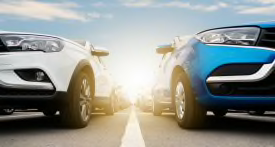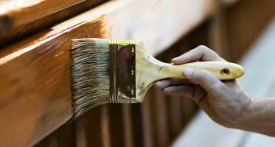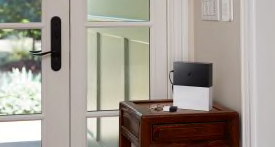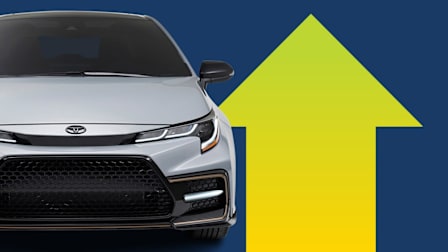Why You Should Always Check a New Car for Damage
A close inspection before driving off the lot can save you headaches—and money—down the road

So you’ve bought a shiny new car and can’t wait to take it home for the first time. Not so fast. Just like you would with a used car, you should do a thorough inspection of a new one before signing the sales contract.
We’ve learned this lesson the hard way. Consumer Reports buys dozens of new cars every year for testing, and a few of them have turned out to be less than perfect.
Inspect Before You Sign
Before you sign the sales contract, thoroughly inspect the car. If you discover something wrong with it, you can insist on a repair or replacement. If the dealership refuses, walk away from the sale.
The following steps will help minimize the chances you’ll miss any damage or defect.
Inspect the car during daylight hours. If possible, check the car in full sunlight so that you can see any imperfections in the paint, wheels, and upholstery. “If the car is wet, ask someone from the dealership to dry it off,” Crossen says. “A watery sheen can hide imperfections.”
Give yourself plenty of time. The final inspection is one of the most important parts of the transaction. Don’t speed through it, no matter how eager you are to drive your new car home. “Don’t let the dealer rush you either,” Crossen says. “The larger the vehicle and the more features it has, the longer it will take you. The sales staff should be okay with that.”
How to Beat the 'Four Square' and Other Car Dealership Sales Tactics
Don’t get ripped off. We’ll help you go into the dealership armed with knowledge and confidence.
Look at all the car’s individual parts. Check the condition of the wheels and tires, being wary of scratches on the wheels and odd wear on the tires. (You want to make sure no one has rubbed them on the curb.) Scrutinize each body panel. Inspect each seat for stains and rips, and make sure the dash, doors, and glass aren’t cracked, scuffed, or otherwise damaged. Make sure the power seats and mirrors move in all directions, that the power windows go up and down, that the audio system works, and that other electronic accessories such as satellite radio, the adaptive cruise control and driver assistance systems (if it has them), and the backup camera (or surround-view cameras, if so equipped) work the way they’re supposed to. Make sure your phone pairs with the car’s infotainment system, and ask someone from the dealership to troubleshoot if it’s not working.
Don’t forget the parts of the car that are often overlooked. Raise the hood to look for any evidence of leaking or damaged parts. It’s also a good idea to take a peek at the car’s underside. Ask the dealer to put it on a lift so that you can inspect the bottom of the car. “Not everyone will know what they’re looking at, but you’ll probably be able to recognize if something looks like it’s broken, damaged, leaking, or missing,” Crossen says. “I’ve found that mechanical and electronic problems are usually caught by the dealership before the car gets to you. But cosmetic things like wheels, upholstery, and bumpers seem especially vulnerable to potential unnoticed damage.”
If You Find a Problem at the Dealership
Discuss whatever you’ve found with your salesperson and go to a sales manager if necessary. Some discoveries can invite last-minute negotiations, either for repairs or price adjustments. “Instead of, say, repainting a small defect, the dealership may offer a discount off the purchase price or some free service at a future date,” Crossen says. “It’s up to the car buyer to decide whether or not the terms are acceptable.”
Don’t rely on a verbal promise that a problem will be fixed. Instead, before you sign the sales contract, ask for a “we owe.” This piece of paper documents the problem and outlines what the dealer will do about it. “You should be as specific as possible on a we-owe, and demand the same in return from the dealership,” Crossen says. “If there’s a problem with the paint, make sure you specify exactly what and where it is on the car, and that the dealership says exactly what they will do to fix it.”
Crossen says that the dealership may refuse to fix a problem but that should be included in the we-owe as well, so that there’s documentation in case you want to appeal directly to the manufacturer.
Cost of Car Ownership Over Time
See how car brands compare when looking at maintenance costs.
If You Find a Problem After You’ve Taken the Car Home
A dealership may be less likely to fix a problem you find after you’ve taken the car home. “If the issue isn’t found until after you drive the car off the lot, the dealership might try to have you run the work through your own insurance,” Crossen says.
In these cases, acting fast is key. Crossen recommends taking the following steps to increase your chances of a satisfactory outcome.
Take a picture and send it immediately to the dealership via email or text. The sooner you contact them, the better, Crossen says. “Even driving back to the dealership before you send the picture puts miles on the car and makes it more difficult for you to prove that the damage didn’t happen on your watch.”
Get the car to the dealership quickly. For the reasons noted above, you’ll want the dealership staff to see, acknowledge, and document the problem as quickly as possible.
Request that the dealership write up a we-owe so that you have documentation. “They may not agree to fix the problem if there’s no way to prove that the damage did not happen after you took the car, but they may offer monetary compensation or a service department gift certificate in lieu of repair,” Crossen says. “Remember that very minor damage, like a rock chip, could actually be better not to repair because there’s a chance that new paint won’t match the factory color.”
If all else fails, contact the manufacturer directly. Every manufacturer has a customer support line that can help you if the dealership you’re working with can’t or won’t. They may be able to get you what you need.




















